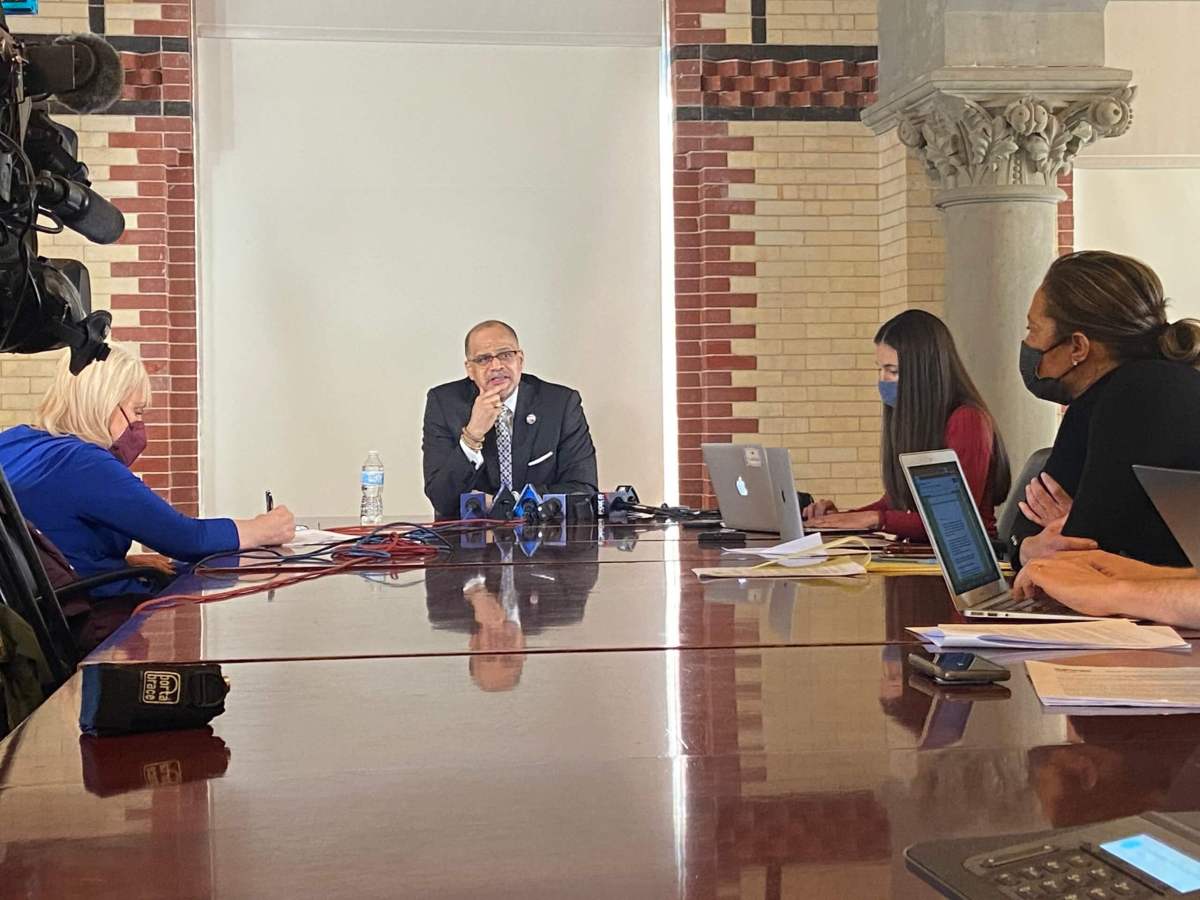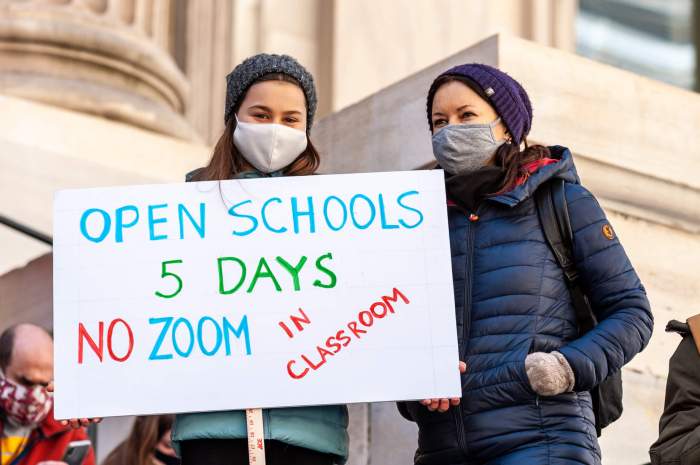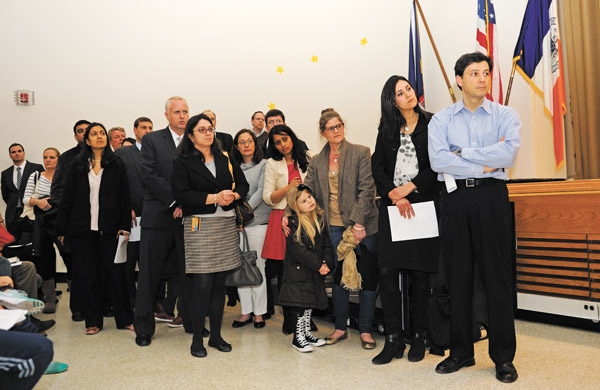New York City Schools Chancellor David C. Banks set a course Wednesday for transforming the city’s public school system, aiming to change the way the city’s 1.1 million students get a substantial education.
Alongside Mayor Eric Adams on March 2, Banks highlighted four primary pillars to bolster literacy and promote strong educational values to improve NYC schools. The mayor and chancellor spoke of their years-long collaboration and commitment to implementing necessary reforms to the NYC Department of Education (DOE) to an audience of educators, press, guests and lawmakers.
“Just over two months after becoming chancellor, I thought it would be a good time to share with all of you more detail about my vision for New York City public schools and how we are going to go about achieving this vision together,” said Banks during his announcement. “Our public schools are essential to the fabric and economy of New York City. Our families depend on our schools so that they can do their own jobs while knowing their children are in a supportive environment where they will be academically challenged and held to high expectations every day.”
The four pillars include re-imagining student experiences; focusing on scaling, sustaining and restoring working methodologies; prioritizing overall student wellness with high-quality nutrition programs, safe and green spaces and comprehensive whole-child support; and engaging and building trust in schools with families and communities.
Banks’ plan aims to address some of his major criticisms with the current public school system. He believes teachers were offering lesson plans that don’t stimulate students enough; the curriculum lacks practical and life-applicable skills to get into college and get good jobs; and school districts seem to be bogged down by bureaucracy.
“In the past five years over 120,000 families have left this school system,” Banks said. “This happened before the pandemic and it was accelerated throughout this pandemic. 120,000 families decided to vote with their feet and to say ‘we are going to find other alternatives and other choices for our children’. That’s an indictment of the work that we have done. So we have also as a team come together here to figure out how to make a change.”
To address the third criticism, Banks announced that the DOE would eliminate the executive superintendent position to clear out a level of bureaucracy while shifting more resources to school principals and district superintendents.
“We will be saving millions of dollars but we will also be restoring some of those dollars back closer to the schools themselves,” said Banks. “Right now, superintendents work with really a skeletal team, they don’t have the constant support that they actually need in order to cover the schools. The reason why superintendents exist in the first place is to be not simply an evaluator of schools, but also to provide the level of support the schools need. So if there is a school that is struggling with their reading and they need an additional reading coach they are supposed to get that from their superintendent. And right now they cannot because the superintendents have lost most of their authority.”
Banks also addressed the deep importance of empowering Black and Brown students because their success leads to the success of the entire NYC community.
“We spend $38 billion every single year to get the outcomes that we get,” Banks said. “But 65% of Black and Brown children never achieve proficiency. It’s a betrayal. And that is why we wanted to make this announcement right here today in the hall of the headquarters of the Department of Education. We need to reimagine the school experience.”





































